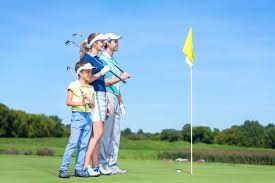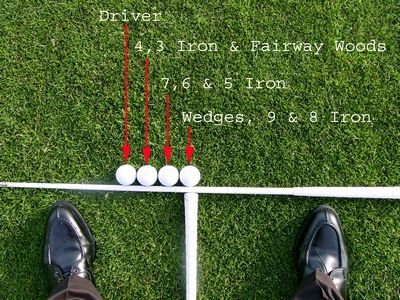
You need to learn the key lessons of top PGA Tour players if you want to be a great driver. There are many techniques that can be used to improve your golfer swing. Read on to find out how to improve your driver. You'll soon be hitting better golf shots once you have mastered these techniques. Read on to discover the techniques you should be using to improve your golf driver swing.
Lessons from PGA Tour players
There are many tips and tricks that the PGA Tour can teach you to improve your golf driver's swing. Many of these lessons will help you get great distance. But, it is important to know how to swing the driver properly if you want the best way to drive a golf club. Here are some great tips from PGA Tour members:

How to hit a good driver
Proper balance and teeing up are essential to achieving a perfect shot with your golf driver. Bad teeing up or poor swing technique can lead to off-center hits and poor impact positions. Swing in a more consistent position, and move your weight closer to your trail foot. Also, it is important to keep a steady rhythm after each shot. For a great driver shot, it is important to have the right swing speed.
Getting the best angle at impact
It is essential to choose the right angle of attack for the ball at impact in order to achieve maximum distance. While the rule of thumb states that a golf ball should be hit from as high a height as possible during the downswing, it's not applicable to drivers. Drivers don't use divots, unlike other clubs. Golf pros use a launch monitor to calculate the angle of attack.
Early extension correction
Golfers make the most common error of early extension. This can often lead to toe shots and shanks. Here's how to fix the problem. First, you need to lose your tush line. You should try to look straight at impact. You should also work on your hips. Third, it is very easy to correct any early extension. For both problems, you should work on your hips and balance.

Keeping your arms swinging
The ultimate goal of the downswing, is to generate effortless power off the ground. To allow the arms to move in the down motion, the body will pivot at this point. When you turn your hips, the arms and shoulders will follow. Your right side will be directly ahead of your hip. Your right arm should remain straight until impact. This will prevent a flared elbow effect. The right arm should be in line with the golf ball.
FAQ
What is a bogey, you ask?
A bogey is an imaginary number used as a target for golfers. It is not an actual part of the game. However, it can be used to keep track of scores. The hole is won by the player who gets closest to the number.
The concept of a bogey was invented by Jock Hutchison, the first professional golfer from Scotland. He came up with the idea while playing on his own at home.
He wanted to keep track how he was doing, so he wrote a number on paper and stuck it up to his bed. This became the "Hutchy Bogey."
How can I learn to play the game of golf?
Learning how to play the game of golf takes practice and patience. However, it is possible to improve your game over time. Here are some tips for you to improve your game.
-
Practice regularly. Golf requires concentration and constant attention. Practice is the best way to improve your game.
-
Play with people who know how to play. Playing with people can help you create your own style.
-
Read about golf before you begin practicing. This will help you to understand what you should be working on.
-
You don't have to be able to do everything at once. Concentrate on one aspect in your game. One example is to work on your putting and chipping skills. Once you feel confident in this area, move on to another part of your game.
-
Take lessons. Lessons can teach you important things like stance, swing speed, posture, etc.
-
Try new techniques. Try out new grips, stances or swings.
-
Keep records. Keep track of your progress by recording your scores. You will be able to identify your areas of improvement.
-
Join a local golf club. There are many clubs that offer free lessons. These clubs are often staffed by friendly people who are always willing to help and show newcomers how to succeed.
-
Get a coach. You can get guidance from a professional coach on certain areas of your game.
What equipment should you bring to play golf?
Golfers need to wear clothing suitable for the weather conditions. Golfers should wear long trousers and a shirt (with sleeves) with good grip. For outdoor games, players should always wear sunscreen and sunglasses.
After exercising, you should bring a towel to wipe your skin and body. It is a good idea to also bring a hat with gloves, a water bottle, snacks, and fruit.
Statistics
- Professional golfers typically make between 60% and 70% of greens in regulation. (en.wikipedia.org)
- In the United States, women made up 25 percent of golfers in 2021, which was up from 19 percent in 2011, and junior female golfers account for 35 percent or 1.1 million golfers.[50] (en.wikipedia.org)
- Professional golfers typically make between 60% and 70% of greens in regulation. (en.wikipedia.org)
- They do this by means of assessing and rating courses according to the average good score of a "bogey golfer," a player with a handicap of around 20. (en.wikipedia.org)
External Links
How To
How can you play more golf when the wind is blowing?
Golf is a game played outdoors on open grassy areas. It is one the most loved sports in the world. There are many kinds of golf courses in the world. They range from public parks and private clubs. Indoors, like indoor arenas and shopping malls, you can also play golf. The game consists of a series of holes, where players must hit balls into them. Each hole has a tee box, fairway, rough, hazards (e.g., water), and green. Players use either a driver, wedge, long iron, or putter, depending upon the type of shot required. According to the course rules, players may need to carry the ball for a specified distance before hitting it. Or they may only need to drop the ball into the cup. There are many factors that affect how a golfer hits the ball when playing outside. These conditions include speed, temperature and humidity.
There are two main types: crosswinds, and headwinds. Crosswinds blow from left to right, while headwinds blow from right to left. If the wind is blowing toward the golfer then it's hitting against the winds. If the wind moves away from him/her then it's hitting with the winds. Golf in strong winds is harder as the ball tends not to travel as far and higher. This makes it difficult for the player to control the trajectory and direction of the ball. To offset these effects, players attempt to keep their club face perpendicular the ground. They strike the ball with maximum force and contact so it is fully in contact with the ground. Even though the ball is less likely to fly in stronger winds, it still travels further due to its increased air resistance.
Golf in the wind is a skill that requires practice. Wind affects the flight path and trajectory of the ball. A good golfer should always know what kind of wind is currently affecting the area. He/She would adjust the swing to compensate so that the ball can be hit cleanly and with minimal energy. The wind's location is another important consideration. The wind does not travel uniformly in all directions. The breeze from the ocean is typically very light but is stronger closer to the shore. Similarly, the wind blows strongest close to the ground. Golfers need to pay particular attention to wind direction, intensity and other factors.
In summary, playing golf in the wind requires constant adjustments to your swing. You need to watch the wind and make sure that your swing is aligned properly. Learn how to read and adapt the wind to your swing.